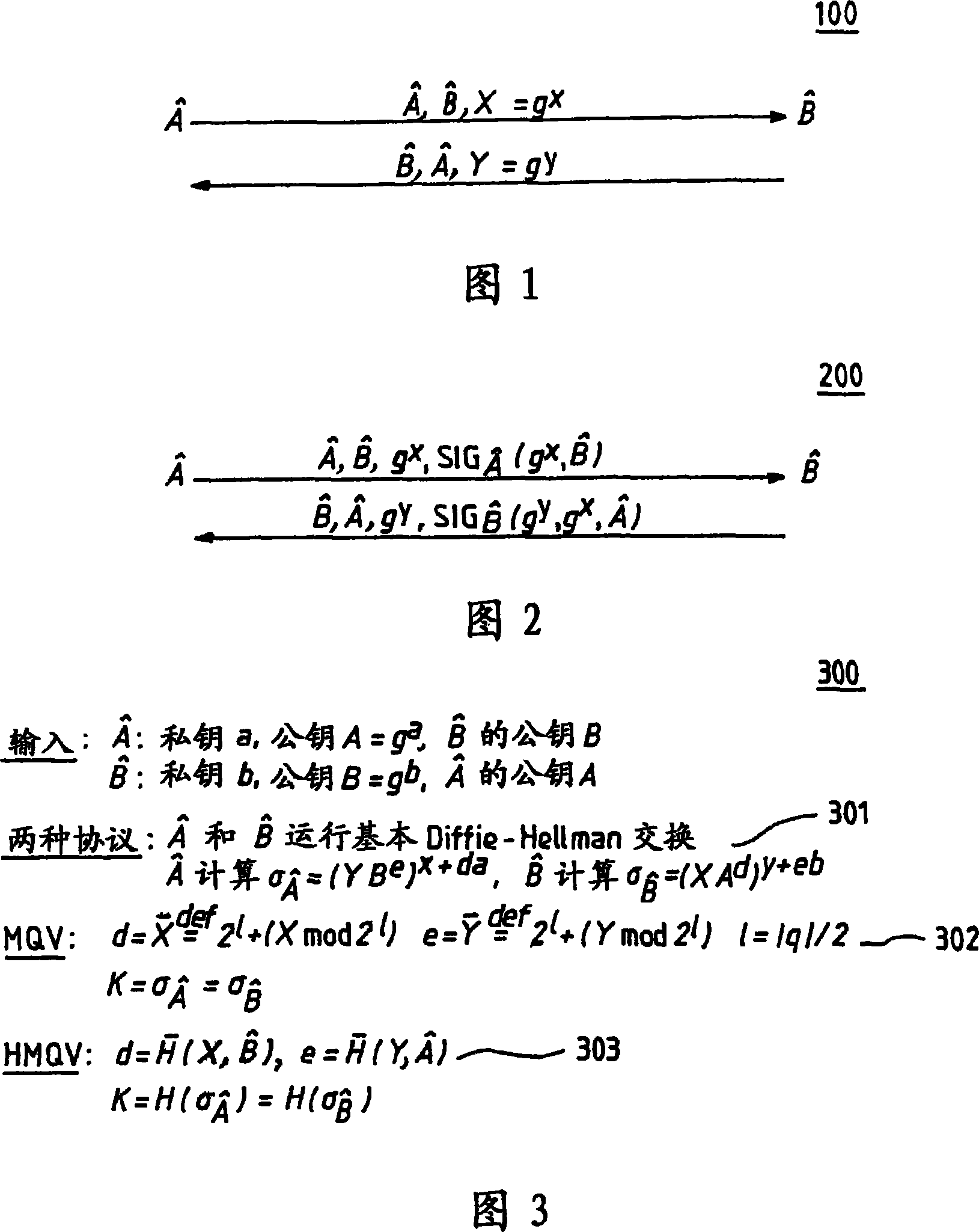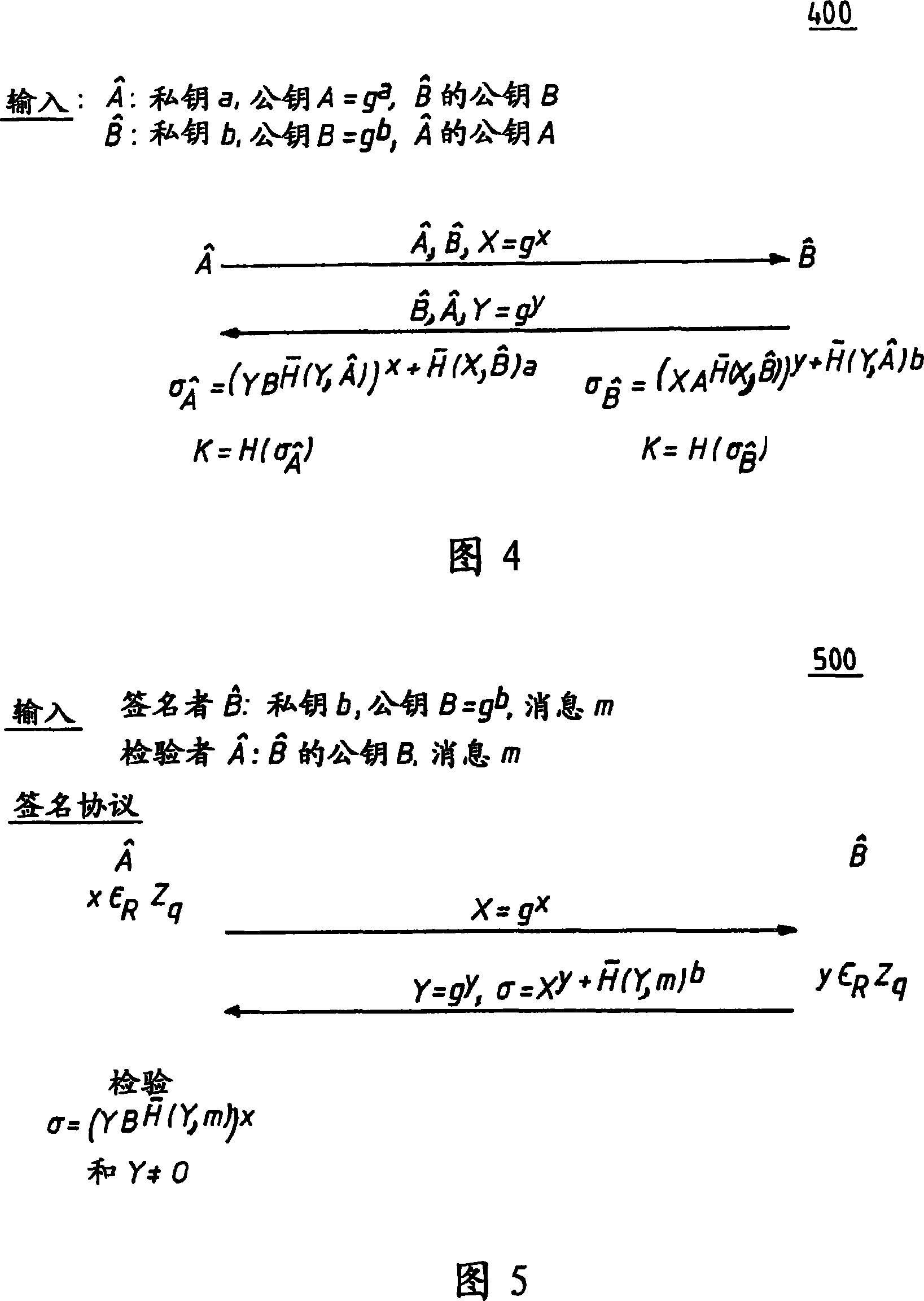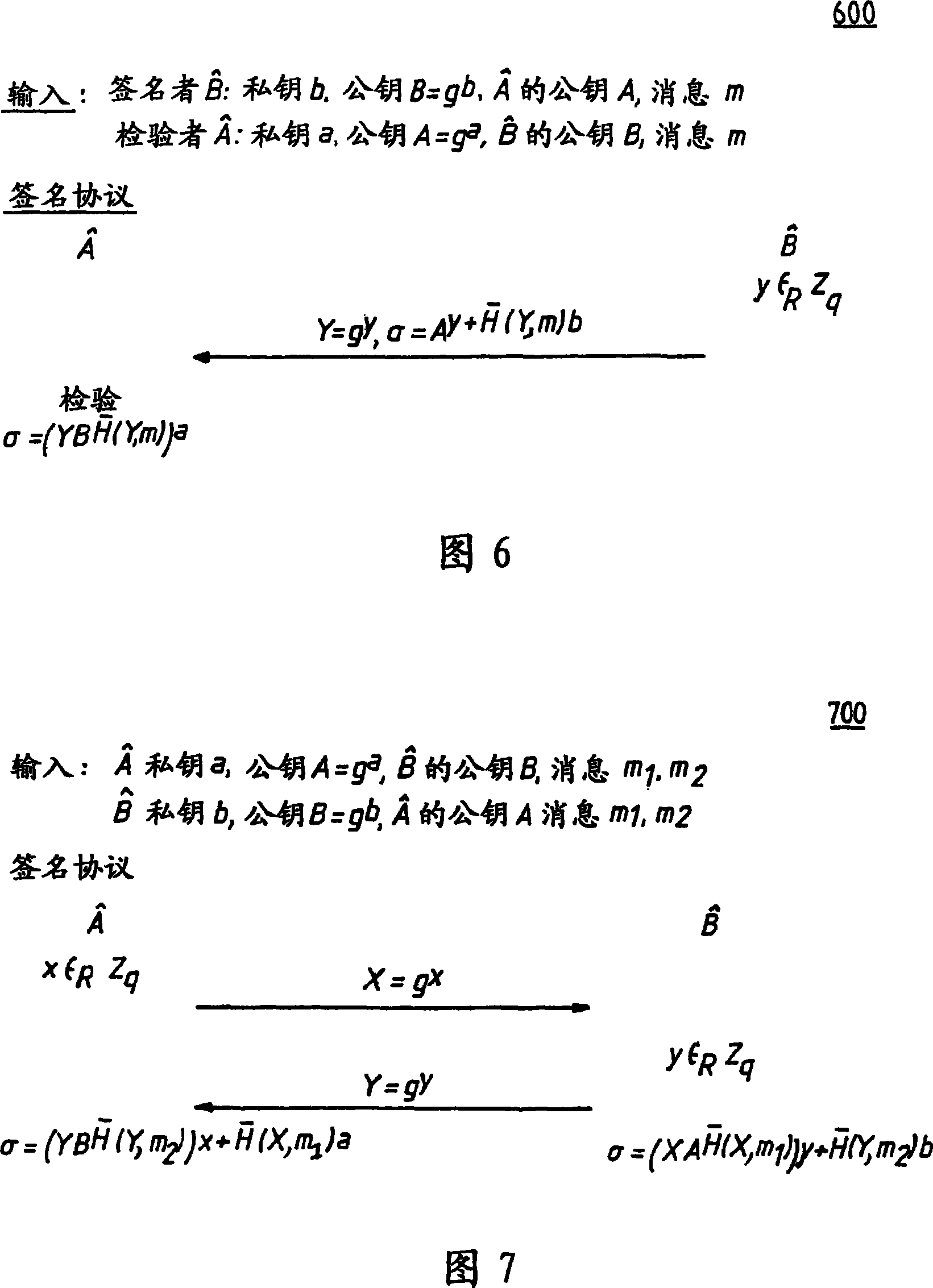Challenge-response signatures and secure diffie-hellman protocols
A signer and independent variable technology, applied to key distribution, can solve the problem of avoiding any form of analysis
- Summary
- Abstract
- Description
- Claims
- Application Information
AI Technical Summary
Problems solved by technology
Method used
Image
Examples
Embodiment Construction
[0029] Referring now to the drawings, and more particularly to FIGS. 1-11 , there are shown exemplary embodiments of methods and structures in accordance with the present invention.
[0030] As a preliminary note on groups and notations, all protocols and operations discussed in this paper assume a cyclic group G of order q (usually prime) generated by a generator g. The bit length of q is given by |q| (eg means the logarithm of q to base 2, rounded up to the nearest integer), and this quantity is used as an implied safety parameter. For simplicity, as is common in practice, the parameters G, g and q are assumed to be fixed and known in advance by all parties. Optionally, these values can be included in certificates or the like.
[0031] A multiplicative representation of group operations is used here, but the process is equally applicable to additive groups, such as elliptic curves or any other algebraic or special groups, finite fields, composite modules, etc. In the pro...
PUM
 Login to View More
Login to View More Abstract
Description
Claims
Application Information
 Login to View More
Login to View More - R&D
- Intellectual Property
- Life Sciences
- Materials
- Tech Scout
- Unparalleled Data Quality
- Higher Quality Content
- 60% Fewer Hallucinations
Browse by: Latest US Patents, China's latest patents, Technical Efficacy Thesaurus, Application Domain, Technology Topic, Popular Technical Reports.
© 2025 PatSnap. All rights reserved.Legal|Privacy policy|Modern Slavery Act Transparency Statement|Sitemap|About US| Contact US: help@patsnap.com



